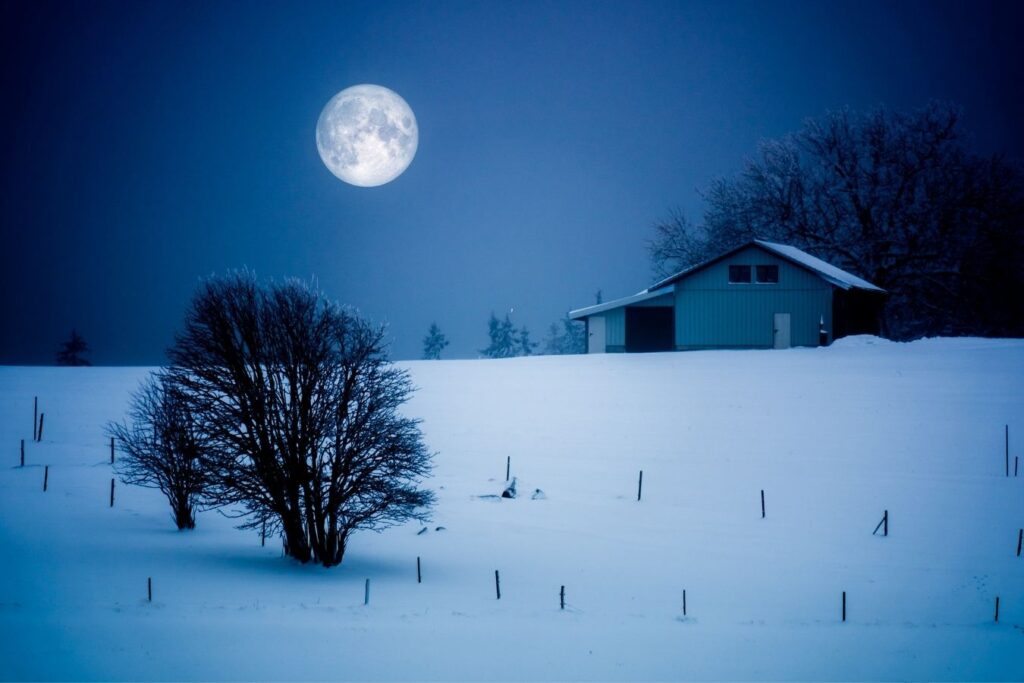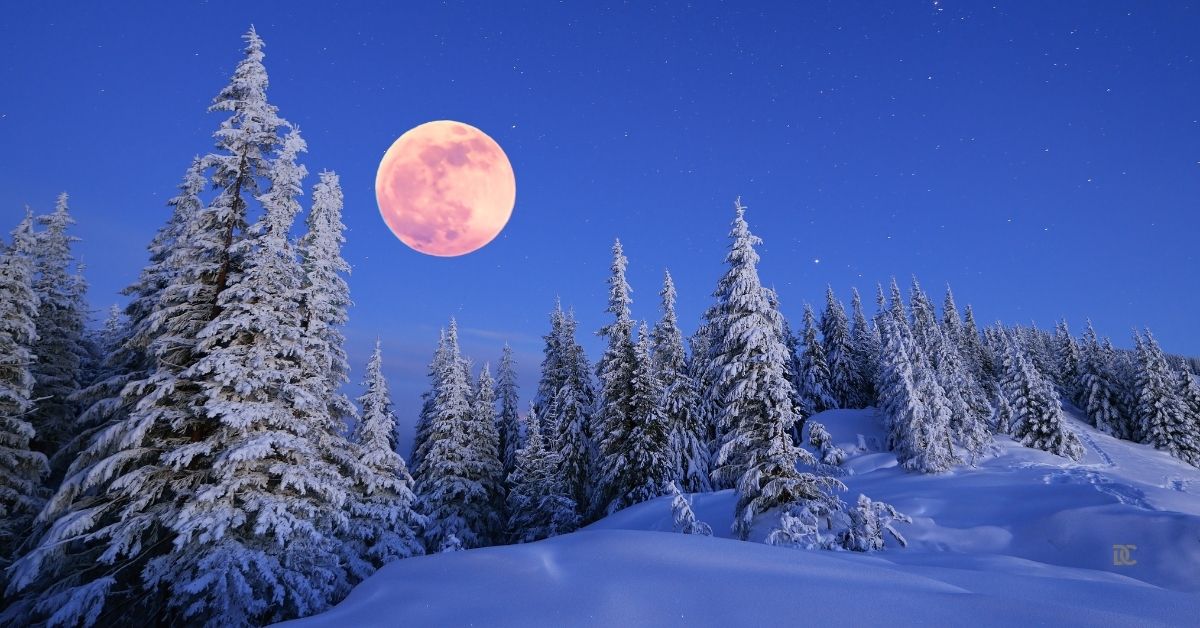As we approach the end of the year, the night sky is getting ready to offer a beautiful cosmic gift: December’s full moon, known as the Cold Moon. This final full moon of 2024 will brighten the winter skies just in time for the holiday season, peaking in the early morning hours on Sunday, December 15.
When to Look for the Cold Moon?
While the moon reaches peak illumination at 4:02 a.m. EST on Sunday, December 15, you won’t have to stay up late or wake up too early to enjoy the show. The moon will appear strikingly full on both Saturday and Monday nights as well. In fact, it will look almost completely full for several days around its peak:
- Friday, Dec. 13: Approximately 95% of the moon’s nearside lit up
- Saturday, Dec. 14: About 99% illuminated
- Sunday, Dec. 15: A full 100% illumination at peak
- Monday, Dec. 16: Still glowing at around 98%
That means you’ll have multiple nights to gaze up and appreciate the Cold Moon, with Sunday into Monday offering a particularly long viewing window—about 16 hours and 3 minutes of moonlight.
Why Is It Called the Cold Moon?
The Old Farmer’s Almanac calls December’s full moon the Cold Moon for a very straightforward reason: it’s associated with the chill of early winter. December often brings some of the year’s coldest weather, and this moon’s name reflects that crisp, frosty atmosphere.
Also Read

Other Names for the December Full Moon
Different cultures and traditions have given the December full moon a variety of descriptive nicknames, each telling its own story:
- Long Night Moon: With the winter solstice right around the corner, December has some of the longest nights of the year. The Mohican people called this full moon the Long Night Moon, highlighting these extended periods of darkness.
- Drift Clearing Moon, Frost Exploding Trees Moon, Hoar Frost Moon, Snow Moon, Winter Maker Moon: These names evoke vivid images of a cold landscape—snowy drifts, frost forming on trees, and a chill in the air as winter tightens its grip.
- Moon When the Deer Shed Their Antlers & Little Spirit Moon: Other Native American cultures have their own poetic names, linking this lunar cycle to changes in nature and the wildlife preparing for the deep winter season.
What else can you see on the December Night Sky?
If you’re out moon-gazing around December 14, look a little beyond the bright lunar surface. On that night, Jupiter will be positioned between the nearly full moon and Aldebaran, the brightest star in the Taurus constellation.
You don’t need binoculars or a telescope—just look up with your own eyes, and you may spot the shining planet, adding its own sparkle to the scene.
How to Watch the December 2024 Full Moon?
Clear skies always enhance your viewing experience. Check your local forecast beforehand for cloud cover or precipitation. Even in places where winter skies can be overcast, a few breaks in the clouds might reveal the moon’s glow. The Cold Moon’s brightness is enough to make it easy to see from backyards, porches, or even city streets where light pollution is present.
If you love following the moon’s phases, mark your calendar: The first full moon of 2025—known as the Wolf Moon—will appear on Monday, January 13. Each month’s full moon has its own personality and name, making the lunar calendar a fun way to connect with the rhythms of nature.
The December 2024 Cold Moon offers a beautiful opportunity to pause and appreciate the natural world as the year draws to a close. Whether you catch a glimpse from your living room window or bundle up and head outside for a better view, take a moment to enjoy this early Christmas gift from the cosmos. It’s a fitting finale to the lunar year, lighting up the longest nights and reminding us that even in winter’s quiet darkness, there is still plenty of beauty to be found.






